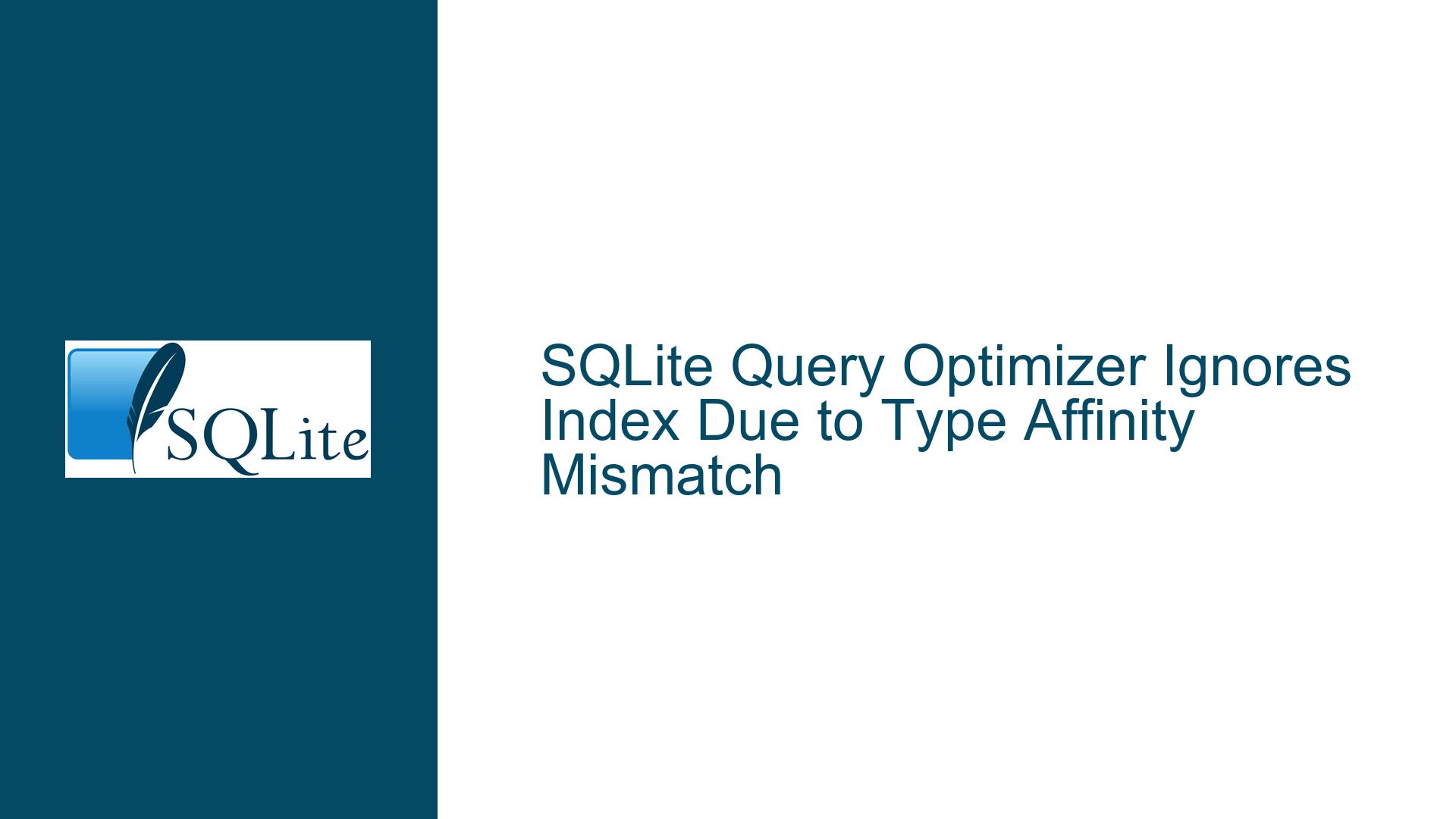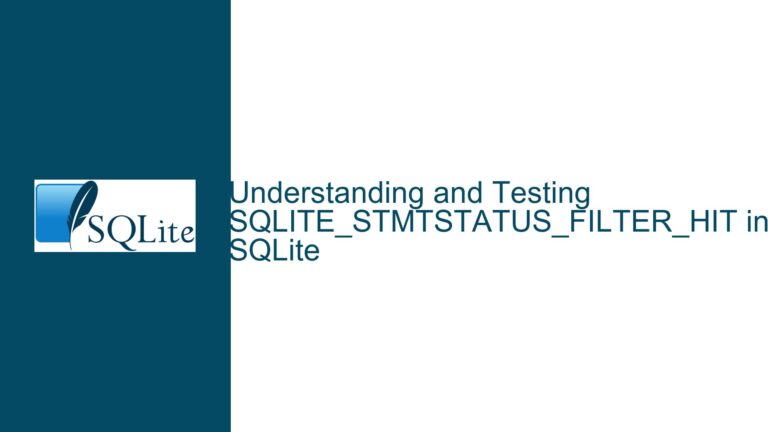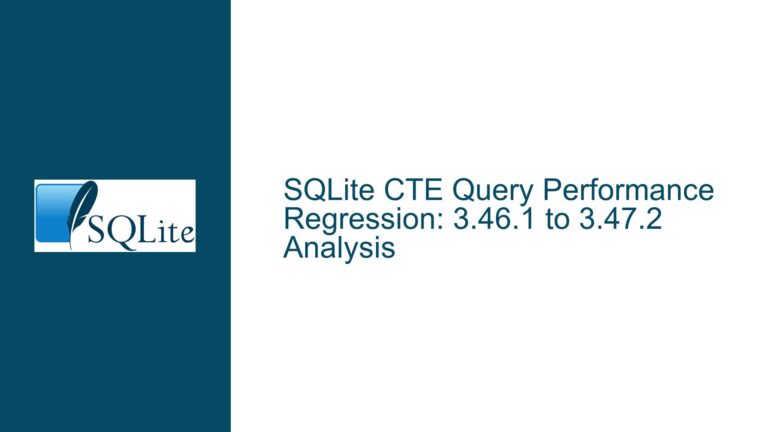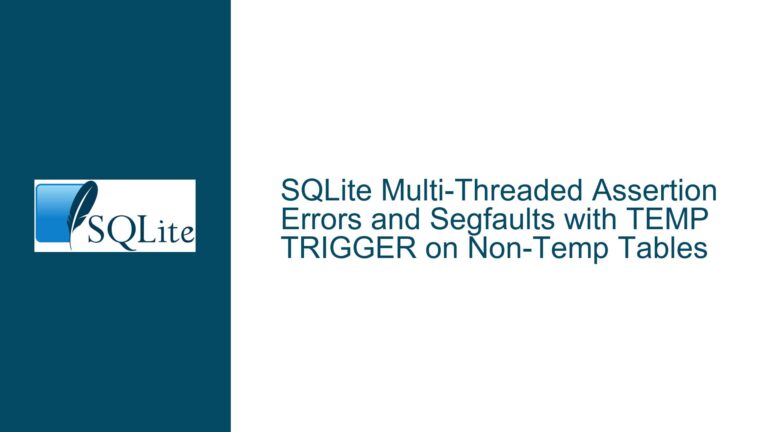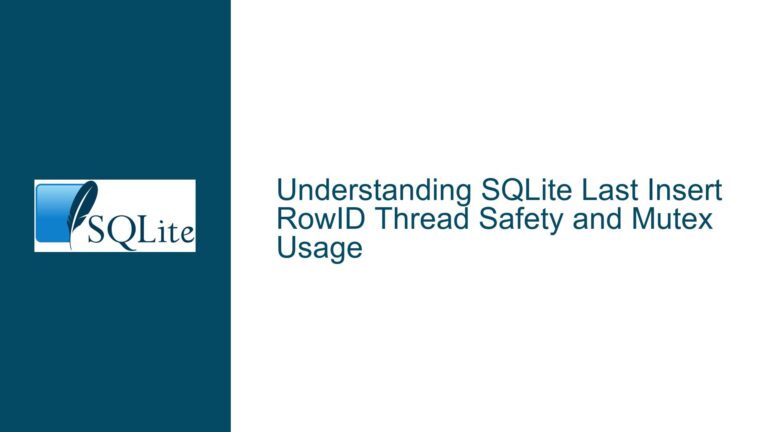SQLite Query Optimizer Ignores Index Due to Type Affinity Mismatch
Type Affinity Mismatch in JOIN Condition Prevents Index Usage
When working with SQLite, one of the most common performance issues arises from the query optimizer’s inability to utilize indexes due to type affinity mismatches. This issue is particularly evident in JOIN operations where columns with different type affinities are compared directly. In the provided scenario, we have two tables: t1 with a column a of TEXT affinity and a unique index, and t2 with a column b of INTEGER affinity. The query attempts to perform a LEFT JOIN between these tables using the condition a = b. Despite the presence of a unique index on t1.a, the query optimizer chooses to perform a full table scan on t1 instead of leveraging the index.
The root cause of this behavior lies in SQLite’s type affinity rules. According to the SQLite documentation, when comparing two values with different type affinities, SQLite applies a set of rules to determine the resulting affinity of the comparison. Specifically, if one operand has INTEGER, REAL, or NUMERIC affinity and the other has TEXT or BLOB affinity, SQLite applies NUMERIC affinity to the TEXT or BLOB operand. This means that the condition a = b is internally transformed into cast(a as integer) = b, which prevents the use of the index on t1.a.
This behavior is not immediately obvious and can lead to significant performance degradation, especially when dealing with large datasets. The issue is further complicated by the fact that the query still produces correct results, making it difficult to diagnose without examining the query execution plan.
Implicit Type Conversion and Its Impact on Query Optimization
The core issue stems from SQLite’s handling of type affinity during query optimization. Type affinity in SQLite is a recommendation for the type of data stored in a column, but it is not enforced strictly. This flexibility allows SQLite to store values of any type in any column, but it also introduces complexities when comparing values of different affinities.
In the case of the query SELECT * FROM t2 LEFT JOIN t1 ON a = b, the columns a and b have different type affinities: a has TEXT affinity, and b has INTEGER affinity. According to SQLite’s type affinity rules, when comparing a TEXT value with an INTEGER value, SQLite will attempt to convert the TEXT value to an INTEGER. This implicit conversion is what prevents the query optimizer from using the index on t1.a.
The implicit conversion is not always straightforward. For example, if a contains a value like "1xyz", the conversion to INTEGER will fail, and the value will be treated as 0. This can lead to unexpected results, especially if the data in t1.a contains non-numeric strings. The query optimizer must account for these possibilities, which further complicates the decision to use an index.
Additionally, the presence of mixed data types in t2.b (where b can sometimes contain strings) adds another layer of complexity. In such cases, the query optimizer must consider the possibility that b could be a string that matches a, even if b is primarily numeric. This uncertainty makes it difficult for the optimizer to confidently use the index on t1.a.
Resolving Index Ignorance Through Explicit Type Casting and Query Refactoring
To address the issue of the query optimizer ignoring the index due to type affinity mismatches, several strategies can be employed. The most straightforward solution is to explicitly cast the INTEGER column to TEXT in the JOIN condition. This ensures that both sides of the comparison have the same type affinity, allowing the optimizer to use the index on t1.a.
For example, the query can be rewritten as:
SELECT * FROM t2 LEFT JOIN t1 ON a = cast(b as text);
This modification changes the type affinity of b to TEXT, making it compatible with a. As a result, the query optimizer can now use the index on t1.a, leading to a more efficient query execution plan.
However, this approach assumes that all values in b can be safely cast to TEXT. If b contains values that cannot be cast to TEXT (e.g., BLOBs), this solution may not be appropriate. In such cases, additional filtering may be necessary to ensure that only valid comparisons are made.
Another approach is to use the typeof function to explicitly check the type of b before performing the comparison. This can be particularly useful when b contains mixed data types. For example:
SELECT * FROM t2 LEFT JOIN t1 ON a = cast(b as text) AND typeof(b) = 'text';
This query ensures that the comparison is only made when b is of type TEXT, avoiding the pitfalls of implicit type conversion. However, this approach may not be suitable for all scenarios, especially if b is primarily numeric and only occasionally contains strings.
In cases where the data in t1.a and t2.b is known to be numeric, another option is to cast a to INTEGER in the JOIN condition. This approach can be useful if the majority of the data in t1.a is numeric and the index on t1.a is not critical for performance. For example:
SELECT * FROM t2 LEFT JOIN t1 ON cast(a as integer) = b;
However, this approach should be used with caution, as it can lead to unexpected results if t1.a contains non-numeric strings.
In summary, the key to resolving the issue of the query optimizer ignoring the index due to type affinity mismatches lies in understanding SQLite’s type affinity rules and how they impact query optimization. By explicitly casting columns to ensure compatible type affinities or using additional filtering to handle mixed data types, it is possible to guide the query optimizer toward a more efficient execution plan. Careful consideration of the data types and the specific requirements of the query is essential to achieving optimal performance in SQLite.
